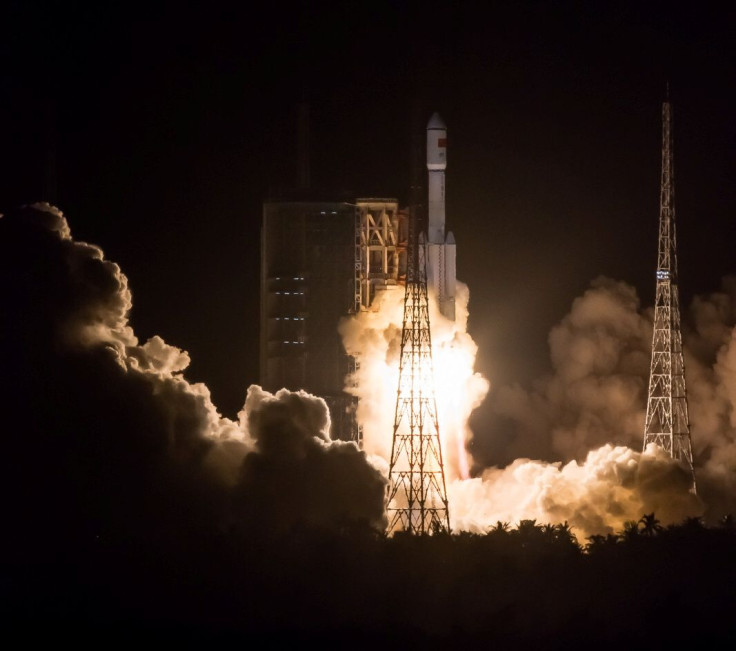China Successfully Launches Long March-7 Carrier Rocket, Marking Another Milestone In Ambitious Space Program

China on Saturday carried out the maiden launch of its next generation Long March-7 rocket from the country’s new Wenchang Satellite Launch Center on the southern island province of Hainan. With the successful test of the medium-sized, two-stage rocket, China continues to race ahead with its ambitious space program.
The Long March-7, which can carry up to 13.5 tons of payload to low-Earth orbit, is expected to become the flagship carrier for China’s future space missions. China claims the rocket uses safer, more environment-friendly fuel — one that releases carbon dioxide and water as its only pollutants.
The rocket’s main payload for this mission was a 5,700-pound, scaled-down version of a crew vehicle that was recovered by Chinese authorities on Sunday from the steppes in Inner Mongolia region in the country’s north where it landed after a short orbital flight.
China also plans to launch the Long March-5 — its largest carrier rocket — from the Wenchang satellite launch centre, the country’s fourth launch site, later this year.
“The more our rockets can lift, the farther we can venture into space,” Ma Zhonghui, the rocket’s chief designer, told the state-run Xinhua news agency. “Long March-7’s successful maiden flight will greatly lift up China’s comprehensive space capacity, and give the country a hefty boost in building itself into a space power.”
Since it sent its first satellite into orbit in 1970, China has been pumping large amounts of cash into its space program. It sent its first astronaut into space in 2003, and in 2011, it launched Tiangong-1 — the first operational component of the Tiangong program, which seeks to put a permanently manned space station into service by 2022.
The second component, Tiangong-2, is scheduled to be launched in September. And a third mission, scheduled for October, will carry two Chinese astronauts aboard the Shenzhou-11, which will aim to dock with the Tiangong-2.
The country’s space ambitions extend far beyond sending astronauts to low-Earth orbits. In 2013, as part of its lunar exploration program, China launched the “Jade Rabbit” — its first lunar probe. By 2018, China aims to land its Chang'e-4 probe on the far side of the moon, and by 2020, it plans to send an unmanned rover to Mars.
"Only by completing this Mars probe mission can China say it has embarked on the exploration of deep space in the true sense," Xu Dazhe, director of China’s National Space Administration, said in April.
So far, four rovers — Sojourner, Sprit, Opportunity and Curiosity — all sent by NASA, have successfully landed on Mars. Two — Opportunity and Curiosity — are still operational.
© Copyright IBTimes 2024. All rights reserved.






















